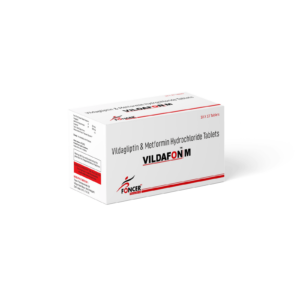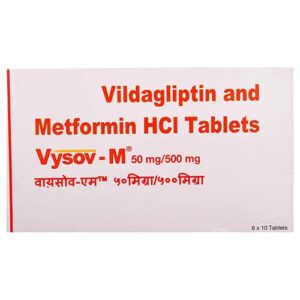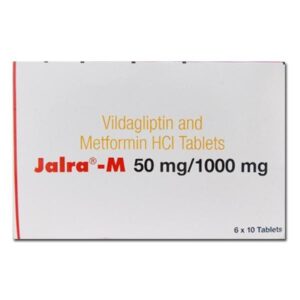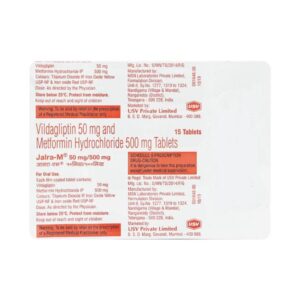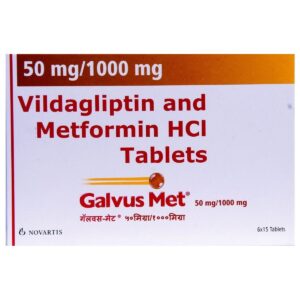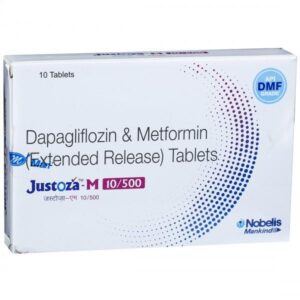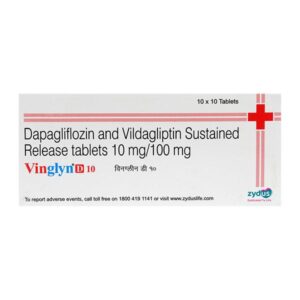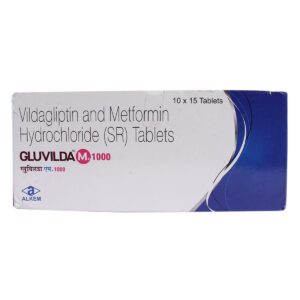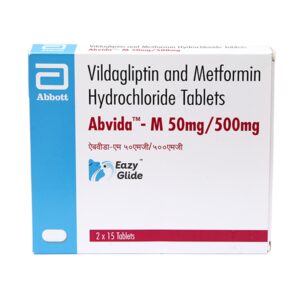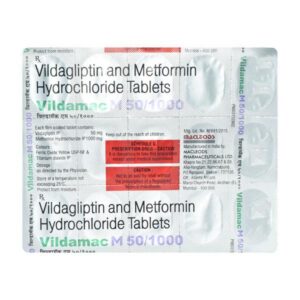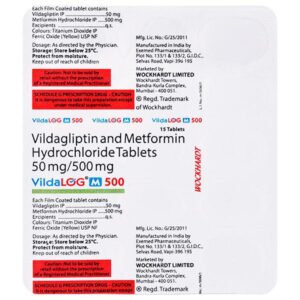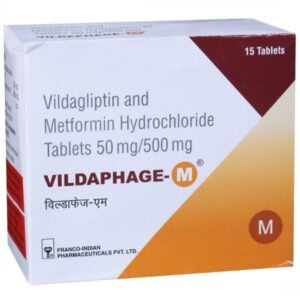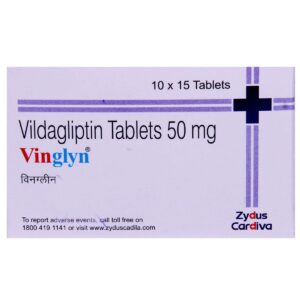METFORMIN + VILDAGLIPTIN
Metformin: Metformin is a medication used to treat type 2 diabetes. It belongs to a class of drugs called biguanides, which work by reducing glucose production in the liver and improving the body’s sensitivity to insulin. This helps to lower blood sugar levels and control diabetes.
The usual starting dose of metformin for adults is 500 mg to 850 mg taken orally once a day, usually with meals. Over time, the dose may be increased up to a maximum of 2000 mg per day, divided into two or three doses.
Metformin commonly causes gastrointestinal side effects such as diarrhea, nausea, vomiting, abdominal discomfort, and gas. These side effects usually improve over time. It is advisable to take metformin with food to help minimize these side effects.
In rare cases, metformin can cause a serious condition called lactic acidosis, which is characterized by the buildup of lactic acid in the body. Symptoms of lactic acidosis include muscle pain, stomach discomfort, difficulty breathing, and feeling cold or dizzy. It is important to seek immediate medical attention if these symptoms occur.
Other potential side effects of metformin include a metallic taste in the mouth, low blood sugar (hypoglycemia), and vitamin B12 deficiency. It is recommended to regularly monitor blood sugar levels while taking metformin to ensure they are within the target range.
Metformin is often prescribed as the first-line treatment for type 2 diabetes. It may also be used in combination with other diabetes medications or insulin therapy to help control blood sugar levels. As always, it is important to consult with a healthcare professional for proper medical advice and guidance before starting or changing any medication.
Vildagliptin: Vildagliptin is an antidiabetic drug used for the treatment of type 2 diabetes mellitus. It belongs to a class of medications called dipeptidyl peptidase-4 (DPP-4) inhibitors.
The primary goal of Vildagliptin is to control blood sugar levels by regulating the secretion of insulin from the pancreas, especially after meals. It works by inhibiting the enzyme DPP-4, which usually degrades the hormone GLP-1 (glucagon-like peptide-1). By inhibiting DPP-4, Vildagliptin increases the concentration of GLP-1 in the blood, enhancing insulin release from the pancreatic beta cells and suppressing the release of glucagon from alpha cells. This overall effect reduces blood sugar levels.
Vildagliptin is typically taken orally as a tablet. The usual recommended dose is 50 mg twice daily. However, dosage adjustments may be necessary based on individual patient factors, such as renal function.
As with any medication, Vildagliptin can cause side effects. Common side effects include headache, dizziness, tremors, nausea, vomiting, abdominal pain, and diarrhea. In rare cases, more serious side effects such as pancreatitis (inflammation of the pancreas) or allergic reactions may occur. It is important to consult a healthcare professional if any adverse effects are experienced while taking Vildagliptin.
It is worth noting that Vildagliptin should not be used in individuals with type 1 diabetes, as it is not effective in this population. Pregnant or breastfeeding women should also avoid using Vildagliptin, as its safety in these situations has not been established. It is crucial to consult a healthcare professional before starting or changing any medication regimen.

